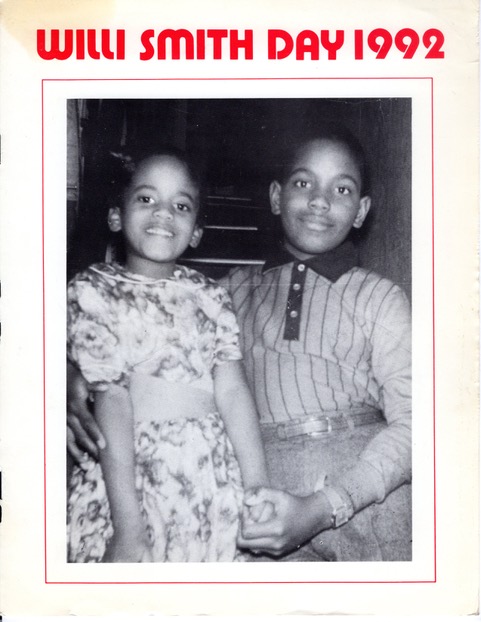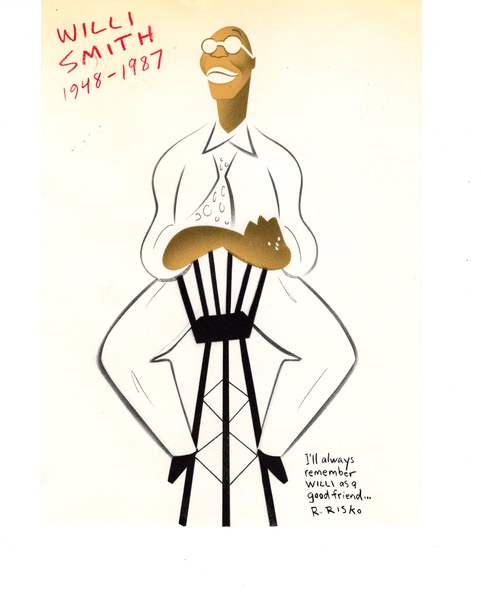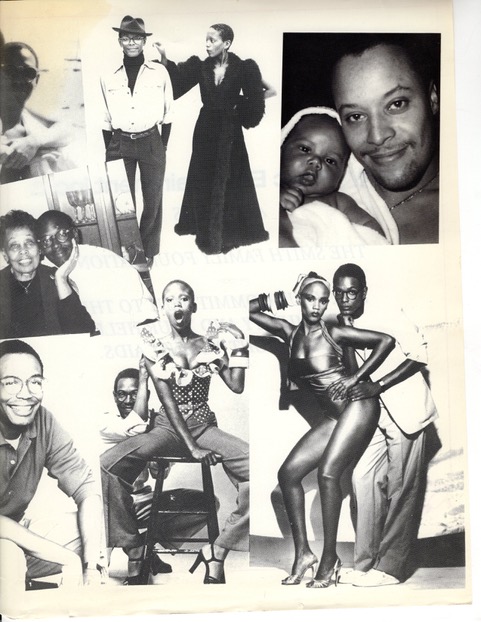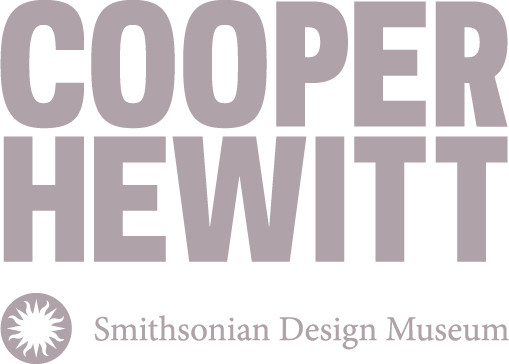Shailah Edmonds
Back in the eighties, the modeling life was very wild, and we partied a lot at clubs like Studio 54, the Paradise Garage, and Better Days. I met Toukie Smith while modeling here in America—she didn’t come to Paris until later on. We met working at a fashion show. There was a crew of us models that were always working together, and Toukie was one of the Black models in that circle. We worked a few fashion shows together. The first or second time I met her, she told me that her brother was a designer and that I should see him. It was during the fashion season, and I went to see him for a show, and he hired me pretty much on the spot. I think I was a very good fit for him. I was very lively and energetic—and that’s what Willi’s clothes kind of represented because he did fun sportswear and streetwear clothes.
I was going to and from Europe a lot during my modeling days, so I wasn’t really in New York that much to work for Willi continuously, but I walked in his shows from around 1983 to 1984.
I did a few shows for him at the WilliWear showroom and one at the Puck Building. Then, he chose me to represent him at the September 1983 Coty American Fashion Critics’ Awards, where he was chosen to do a show and was winning the award for womenswear. I felt very special and honored to be chosen to do that. I still cherish the little name tag that was attached to my hip—it had my name and his name on it. I remember at the Coty Awards, it was a big event and very well attended by celebrities. It was exciting—lots of hubbub and buzz—pretty frantic backstage. I think we only modeled one or two outfits from one of his collections. It was a showcase more so than a full show. We did what we did on the runway—we danced around, paraded down the runway to great music, and each time got a rousing applause! People loved his clothes and the show. At the after-party, there were people like Sterling St. Jacques, Debbie Allen, Richard Roundtree, and Calvin Lockhart. The show and after-party were unforgettable.
Willi was very generous and kind—very easy going and easy to work with. Some designers were edgy and had this attitude, but Willi was easy to work with. He was very respectful and knew that you understood his clothes and could represent him well. He gave me so many clothes to wear because I was always out and about, and he wanted me to be seen in his clothes. I’m sorry I didn’t save many of them.
Kerby-Jean Raymond, who is the founder and Creative Director of Pyer Moss, sort of has the same vibe as Willi. He kind of has that same freedom and that sporty feeling as Willi. But no one has really employed simple sportswear quite like Willi did.
There are so many talented Black designers that don’t have the funds or means to get proper exposure, but I’m hoping there will be a change once the fashion industry gets on its feet again. When I first started modeling, I was so grateful to be a part of the modeling industry; I didn’t really get into too much of who was Black or white—I was moving and working so fast at that time. But I do know that it was absolutely evident that there were very few Black designers. At the time, it was mainly Stephen Burrows, Scott Barrie, and Willi Smith, and it was evident that there was a scarcity of Black designers. After going through much discrimination in modeling myself, when I retired in the 1990s, I really realized how few commercially successful Black designers there were, and it was pretty painful.
I retired from the mainstream of modeling in the ‘90s. If I could be backstage and coach, or just do one show—I’d demonstrate how you can really have a lot more fun on the runway—show that it is not so boring. Couture shows are one thing—but have a little liveliness in the walk. You could show the outfit plain, one time—it gives the buyer a good idea of what you’re trying to sell—and then on your way back, you can do something fabulous and interesting to show the personality of the outfit. In the past few years, the models have been cookie-cutter—they walk alike, look alike, move alike. Give me some kind of different look—a little bit of personality to let the audience know that you are connected to and enjoying the outfit. For the mass market, that just doesn’t happen in shows anymore. At a time like this, I think it would be a boost to see a little bit more personality on the runway.
I was going to and from Europe a lot during my modeling days, so I wasn’t really in New York that much to work for Willi continuously, but I walked in his shows from around 1983 to 1984.
I did a few shows for him at the WilliWear showroom and one at the Puck Building. Then, he chose me to represent him at the September 1983 Coty American Fashion Critics’ Awards, where he was chosen to do a show and was winning the award for womenswear. I felt very special and honored to be chosen to do that. I still cherish the little name tag that was attached to my hip—it had my name and his name on it. I remember at the Coty Awards, it was a big event and very well attended by celebrities. It was exciting—lots of hubbub and buzz—pretty frantic backstage. I think we only modeled one or two outfits from one of his collections. It was a showcase more so than a full show. We did what we did on the runway—we danced around, paraded down the runway to great music, and each time got a rousing applause! People loved his clothes and the show. At the after-party, there were people like Sterling St. Jacques, Debbie Allen, Richard Roundtree, and Calvin Lockhart. The show and after-party were unforgettable.
Willi was very generous and kind—very easy going and easy to work with. Some designers were edgy and had this attitude, but Willi was easy to work with. He was very respectful and knew that you understood his clothes and could represent him well. He gave me so many clothes to wear because I was always out and about, and he wanted me to be seen in his clothes. I’m sorry I didn’t save many of them.
Kerby-Jean Raymond, who is the founder and Creative Director of Pyer Moss, sort of has the same vibe as Willi. He kind of has that same freedom and that sporty feeling as Willi. But no one has really employed simple sportswear quite like Willi did.
There are so many talented Black designers that don’t have the funds or means to get proper exposure, but I’m hoping there will be a change once the fashion industry gets on its feet again. When I first started modeling, I was so grateful to be a part of the modeling industry; I didn’t really get into too much of who was Black or white—I was moving and working so fast at that time. But I do know that it was absolutely evident that there were very few Black designers. At the time, it was mainly Stephen Burrows, Scott Barrie, and Willi Smith, and it was evident that there was a scarcity of Black designers. After going through much discrimination in modeling myself, when I retired in the 1990s, I really realized how few commercially successful Black designers there were, and it was pretty painful.
I retired from the mainstream of modeling in the ‘90s. If I could be backstage and coach, or just do one show—I’d demonstrate how you can really have a lot more fun on the runway—show that it is not so boring. Couture shows are one thing—but have a little liveliness in the walk. You could show the outfit plain, one time—it gives the buyer a good idea of what you’re trying to sell—and then on your way back, you can do something fabulous and interesting to show the personality of the outfit. In the past few years, the models have been cookie-cutter—they walk alike, look alike, move alike. Give me some kind of different look—a little bit of personality to let the audience know that you are connected to and enjoying the outfit. For the mass market, that just doesn’t happen in shows anymore. At a time like this, I think it would be a boost to see a little bit more personality on the runway.

Shailah Edmonds’ model tag for the Coty American Fashion Critics’ Awards, September 29, 1983
 Women’s Wear Daily article on Willi Smith’s memorial service, held at Parsons School of Design on May 1, 1987. Shailah Edmonds attended and was photographed entering the service
Women’s Wear Daily article on Willi Smith’s memorial service, held at Parsons School of Design on May 1, 1987. Shailah Edmonds attended and was photographed entering the service  Program cover for “Willi Smith Day” 1992 event, displaying a childhood photograph of Willi Smith with his sister Toukie Smith.
Program cover for “Willi Smith Day” 1992 event, displaying a childhood photograph of Willi Smith with his sister Toukie Smith. Courtesy of Shailah Edmonds
 Illustration of Willi Smith by Robert Risko printed in the “Willi Smith Day” 1992 program.
Illustration of Willi Smith by Robert Risko printed in the “Willi Smith Day” 1992 program. Courtesy of Shailah Edmonds
 “Willi Smith Day” 1992 program page showing a collage of family photographs with Willi Smith and his sister, father, and grandmother.
“Willi Smith Day” 1992 program page showing a collage of family photographs with Willi Smith and his sister, father, and grandmother.Courtesy of Shailah Edmonds

